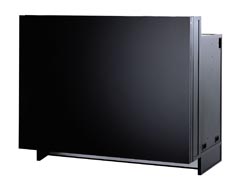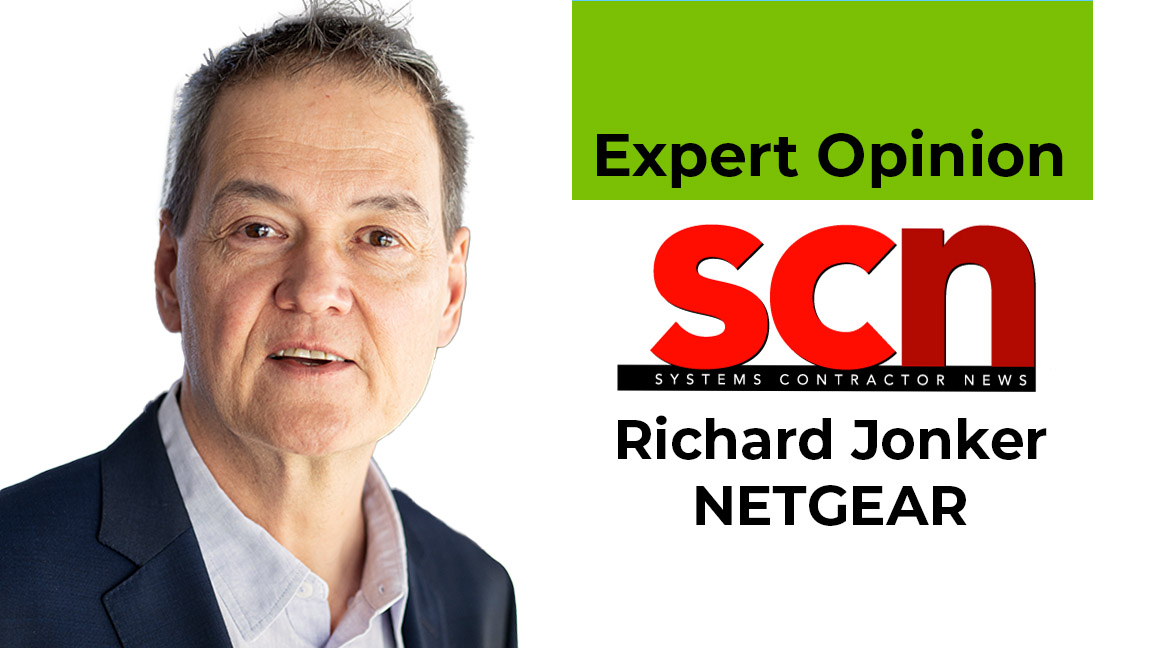On The Lookout

- AT&T Global Network Operation Center in Bedminster, NJ is the nerve center of the telecommunications giant's global enterprise. Christie recently upgraded the existing system with a record 141 Christie TotalVIEW rear projection modules. Operating around the clock, the 12-foot-high by 250-foot-wide seamless video wall displays over 207 million pixels and provides a comprehensive view of all network traffic and activities around the world.The global security increase across communications, utilities, and civic, state, and national emergency operations markets has changed the face of video walls in command and control applications. A growing number of CCTV feeds are being displayed and manipulated on video walls, and a shift to higher-resolution video cubes enhances the provision of mission-critical data.
- Planar Systems has witnessed these trends, as well as an increased popularity in the 16:9 video format as 16:9/FHD becomes more mainstream. Notes Steve Seminario, senior director of product marketing for the Control Room and Signage Business Unit at Planar, "We've seen this particularly in the popularity of our c70SPw 70-inch 16:9 1920x1080 cube."
- Those systems integration firms that service government agencies are addressing the emphasis on homeland security with systems that allow for increased response times. "The ability to respond is top priority," said Derek Paquin, director of business development at Sensory Technologies in Indianapolis, IN. "The need to coordinate first responders and to communicate and react as quickly as possible is what we have seen from a state government perspective."
- To achieve this, the team at Sensory Technologies is employing IP-centric systems that increase flexibility while lowering costs. "We are getting out of the analog world and into the digital world, and in doing so, we are putting all sources on IP networks and reducing costs," said Blaine Brown, Sensory Technologies director of technology.
- To maintain security, Brown and his team are employing encryption technologies for video and data streams from point-of-capture to point-of display. "The systems can also be sand-boxed to where internal information can't be physically connected to the external world, and vice versa," Brown explained.
- Homeland security-driven mandates also require increased up-times in the event of emergency, noted Ken Uhlman, director of data center business development at the Eaton Corporation. "They now require sites to have increased up-times to support the organization and the country in emergencies," he explained. Remote telecommunications sites, for example, may face requirements for eight hours of up-time while central switching stations may need to be operational at all hours.
In the control room at Banco Azteca, Latin America's largest specialty retailer and financial services company, a Jupiter Fusion 980 display wall processor manages all of the inputs from the bank's 800 branches and displays them on a single 54-cube display wall.
Planar's Seminario points out that the demand for 24/7 operation increases the importance of product features that make video wall module servicing easier, such as dual-lamp-changer redundancy and easy-access to internal hardware for quick swap-outs. Planar has also noted a rising interest in automatic visual optimization features, such as the company's SIFI Auto Color and Brightness Balance.
Monitoring The Data Backbone
Globalization has increased the demand for remote control, monitoring, and support of the data centers that support command and control operations. "The trend, over the last several years, is to go offshore-or to go remote," said John Musilli, board member at AFCOM Data Center Institute. "You can have a data center now in California that is managed by somebody in New York, or vice versa. That ability exists because of sensor technology and greater tool sophistication on servers, network switches, and building management systems."
This allows command and control centers to 'follow the sun', or work during normal daylight hours, wherever they may be located. "We have the ability to transfer that monitoring capability from the Americas to Asia, when Asia is awake and we're asleep, because it's really just a data transfer," Musilli explained.
With the Environmental Protection Agency and Congress placing more pressure on IT to streamline energy usage, those charged with the design and management of data centers are seeking better ways of monitoring power and cooling over the day, week, month, and year. In California, for example, where the local grid is stressed during the summer months because of high air conditioning usage, the ability to use sensors to remotely monitor power loads and shift them to lower cost, less stressed locations via a Wide Area Network (WAN) is one solution.
Musilli foresees a greater implementation of solutions like this as "the world becomes flat", which will call for a greater density of sensors that measure power and cooling in smaller increments, as little as one to six minutes. "What that means from a contractor's perspective is that there are going to be different types of installations," he said. "Right now, building management systems may have sensors deployed at roughly one per 600 to 1,200 square feet, and we are looking at densities now that are one per 100 square feet." In the end, this provides a clearer picture for those monitoring the technology. "Knowing that, you can remotely manage a room when something goes wrong."
SCN EXCLUSIVE

Mitsubishi Digital Electronics America's Presentation Products Division has introduced a MegaView Wall video wall cube that measures 80 inches diagonally, designed specifically for large command and control centers. In the past, large cubes have been notoriously dim, but Mitsubishi's VS-80PH40U cube uses a proprietary high-powered projection engine to provide 190 cd/m2 of brightness, which is brighter than most cubes of similar diagonal dimension.
A daily selection of the top stories for AV integrators, resellers and consultants. Sign up below.
Because of its bright image, Mitsubishi's new VS-80PH40U SXGA+ resolution (1400 x 1050 pixels) cube is perfectly suited for large data wall installations, particularly when viewers sit far back from the screens. The new 80-inch cube uses Black Bead screen technology for enhanced contrast and black levels while offering excellent viewing angles, both horizontally and vertically.
Carolyn Heinze has covered everything from AV/IT and business to cowboys and cowgirls ... and the horses they love. She was the Paris contributing editor for the pan-European site Running in Heels, providing news and views on fashion, culture, and the arts for her column, “France in Your Pants.” She has also contributed critiques of foreign cinema and French politics for the politico-literary site, The New Vulgate.
